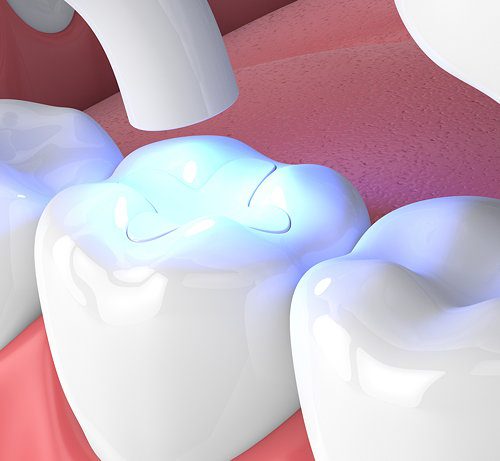Using Fillers to Adjust CTE/CLTE
Fillers for CTE/CLTE Modification
This page covers everything you need to know about using functional fillers for CTE/CLTE modification of plastics, elastomers, coatings and adhesives. We cover the definition of CTE, how the CTE of different classes of materials compare and how addition of fillers can be used to adjust the CTE. As many fillers can be selected, we also give advice about which types work best and why. Finally, we explain the driving principles behind CTE, so that formulators can understand what is really going on.
What is CTE/CLTE?
The coefficient of thermal expansion of a material tells us how much that material expands and contracts when heated and cooled. Almost all materials expand when heated and contract when cooled. Engineers and people designing products care about the thermal expansion coefficient because parts made from dissimilar materials will change dimensions and may no longer fit together properly.
The coefficient of thermal expansion (CTE) is sometimes called the coefficient of linear thermal expansion (CLTE). The same concept can be expressed in volume terms and is then referred to as volumetric or cubic expansion coefficient. The units of CTE are parts per million expansion per one degree rise in temperature, expressed as for example – polypropylene: 80 x 10-6 K-1 which means that a piece of PP becomes 80 millionths longer for every degree hotter it becomes. So, a 1 meter long piece of PP will become 80 x 10-6 meters longer for every 1°C hotter it gets.
Why is CTE Important?
CTE determines the dimensions of parts at different temperature, so control of the CTE is especially important where parts with close tolerances must be assembled together. When those parts are made of dissimilar materials, the CTE may be mismatched and the fit may be poor or out of specification. Usually, CTE values are positive meaning that upon heating, the material expands and its density therefore decreases. Very rarely, materials have zero CTE or even a negative CTE. Negative values occur for materials that contract when heated, which is the case when ice turns to water.
Examples where CTE/CLTE matters
Thermal shock can result in materials shattering when heated or cooled suddenly. For example, when hot water is poured into a cold glass, the glass heats and expands unevenly which creates stresses that may crack or break it. Pyrex glass is formulated to reduce CTE and annealed to alleviate the stresses. Ceramic cook tops would shatter if they were made of standard glass. That special glass is formulated to have zero CTE so that there is no expansion, and therefore no thermal stress when heated and cooled when cooking.
The supersonic passenger airplane Concord is famous for its thermal expansion. At supersonic speeds, the aircraft skin heats up so much that the plane becomes significantly longer. There is one spot which is narrow when the plane is stationary and cool but a person can fit their hand in the same space when the plane heats up in flight. Such changes in dimension must be allowed for in the design. The picture shows a train track warped and damaged by heat because the design did not allow for expansion.

How Can We Control and Adjust the CTE of Plastics?
The table shows the CTE of some typical materials, so that we can compare values for plastics, metals, ceramic and wood. CTE values for plastics tends to be about 10x higher than those for minerals and about 5x higher than for metals. Put another way, plastics have the highest CTE, minerals the lowest and metals are in between. Therefore, if we need to lower the CTE of plastics to be the same as for metals, then we can simply mix in some mineral. At its simplest, that is why minerals are used to control the CTE of plastics. For simple, round minerals like calcium carbonate or glass beads, the CTE of the filled plastic is the weighted average of the volume percentage of the plastic and mineral in the mixture i.e. the so-called linear rule of mixtures applies. The added advantage of isotropic fillers is that the CTE and shrinkage are the same in all three directions (x,y and z). While isotropic fillers do lower CTE, they are not the most effective option. More information about the properties of functional fillers can be found here.
CTE Values for Common Materials – Plastics, Mineral Fillers and Metals
This table gives some typical values for different classes of materials. Extensive data tables can be found in books and here is one online resource for CTE values.
CTE of Common Plastics
Polyethylene: 150 x 10-6 K-1
Polypropylene: 80 x 10-6 K-1
PET: 60 x 10-6 K-1
Polystyrene: 70 x 10-6 K-1
uPVC: 80 x 10-6 K-1
Polycarbonate: 70 x 10-6 K-1
CTE of Common Mineral Fillers
Calcium Carbonate: 4.5 x 10-6 K-1
Barium Sulfate: 1 x 10-6 K-1
Talc: 8 x 10-6 K-1
Kaolin: 8 x 10-6 K-1
Phlogopite mica: 2 x 10-6 K-1
Dolomite: 2.5 x 10-6 K-1
CTE of Metals, Ceramics, Wood
Aluminium: 13 x 10-6 K-1
Steel: 12 x 10-6 K-1
Porcelain: 5 x 10-6 K-1
Glass: 6 x 10-6 K-1
Brass: 18 x 10-6 K-1
Wood: 5 x 10-6 K-1
What are Best Fillers for CTE/CLTE Control?
Sometimes, we need lower CTE than we can achieve using standard isotropic fillers like silica and, in that case, we select other minerals. The best minerals are the ones that increase stiffness i.e. modulus of the polymer by the greatest amount. So, minerals that reduce CTE of plastics most include high aspect ratio mica, chopped glass fiber, carbon fiber and ceramic fibers. Of the fillers, phlogopite mica works best (Arctic Minerals is my preferred supplier). Why do reinforcements that increase stiffness work so well? In the next section we look at the principles involved.
The diagram shows a uv-cured dental filling made with acrylic polymer or epoxy resin. Such materials are highly filled to give durability, to enable the uv light to penetrate and to adjust the CTE. Fillings are exposed to temperature variations and if the CTE differs from that of the tooth, then the filling will debond and fail.

Although high aspect ratio types make the best fillers for CTE/CLTE control, there are some disadvantages. Whereas isotropic fillers give equal modulus and CTE in all directions (x, y and z), high aspect ratio fillers can give very different stiffness and CTE values in the x, y and z directions. The net result is warpage of the part as it is heated or cooled. In order to avoid warpage, it may be desirable to randomize the orientation of the filler particles in order that stiffness and CTE are the same in all directions. That approach avoids any issues with warpage.
Until now we have assumed that the fillers are well bonded to the plastic material. However, that is not always the case. If the filler debonds, then it no longer improves stiffness and no longer affects CTE. In some composites, it may be necessary to add a coupling agent to ensure bonding. That is especially so at high temperatures and in humid conditions where moisture can weaken the filler-polymer interface. A description of coupling agents for filled plastics can be found here.
How to Understand the CTE Adjustment Concept
Now we understand about functional fillers for CTE/CLTE modification, let’s look at what’s going on. How do they really work? Let’s think of the plastic material as a spring. The amount that a spring moves when we apply a force depends on how stiff the spring is and how much force we apply. Hooke’s Law describes that relationship between force and deflection.
As a plastic material is heated, it wants to expand, i.e. there is a force trying to make the plastic larger. If that plastic is very stiff, i.e. its modulus is high, then the force will not make it expand much. Using our analogy, we have a weak force acting on a stiff spring, so the deflection of the spring is very limited. On the other hand, a softer plastic material will expand much more under the same force, so the CTE will be higher. If we look at the table above, we see this confirmed as the CTE of polystyrene, a stiff plastic is much lower than the CTE of polyethylene which is a much softer plastic. Adding mineral fillers to plastics makes them several times stiffer and that results in lower CTE values.
